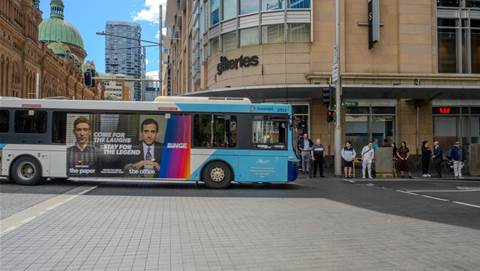
If $2 billion in funding is available, each student is to be provided with a new netbook and a 2-4GB USB key. Less funding would mean providing a netbook to be shared between a pair of students, according to Zymaris.
Students store all their data on the USB key and sync it with a central server. The data can be accessed on any computer, through the school intranet or via an open source learning management system such as Moodle or LAMS.
If anything goes wrong with the operating system or applications, the student's USB key is re-imaged and their data is fetched from the central Intranet server backup. If the student leaves their USB key at home, they can be issued a temporary one for the day.
Zymaris said that re-imaging is a simple five-step process and cuts ongoing maintenance costs because a damaged key can be wiped clean and replaced instantly, without losing any of the student’s data files. It also requires no systems expertise, he said.
"The effort of having designated teaching staff image the USB keys is a trivial, one-click exercise," said Zymaris.
The USB system and application image comes bundled with ‘hundreds’ of free and open source applications for all manner of school and educational requirements and subjects, including maths, science, geography, music theory, multimedia and languages. The full list of software is available via Cybersource.
"It's clear that with the approach we've outlined, it’s feasible to ensure that every single school child in Australia has access to an educational netbook for much of the school week that is filled with hundreds of useful educational software applications,” said Zymaris.
Windows refreshes
On the whole, Zymaris believes that embedding Windows architectures in the education system is an expensive resource vacuum.
He claims that state education departments nationwide are spending a combined $100 million on Windows desktop refreshes every three or four years.
The Victorian Department of Education alone spends in the vicinity of $25 million every refresh cycle on Microsoft Windows desktops. On that basis it is not unreasonable to estimate total refresh spending to be around $100 million. It’s all money that could also be better spent on more netbooks for students, Zymaris claimed.
“There’s no reason we couldn’t have given netbooks to students five years ago,” he explained.
“All the [hardware] technologies in netbooks have been available in abundance for five years.
“The reason we couldn’t go earlier was because you can’t run XP or Vista and get by with a $200 netbook. The cost increase of the hardware needed to run those operating systems reduces the likelihood of putting computer technology in the most number of hands possible,” said Zymaris.
He said Cybersource had lobbied the state education departments for the past decade to adopt open source technologies more broadly, but ‘found it difficult to get the message across that there’s an alternative platform for education’.
“It seems like we have too much [education budget] in Australia to blow,” Zymaris said.
“If we’re throwing around $100 million every refresh cycle I’d be suggesting we have too much money allocated in the space. It has to be more judiciously used,” he added.


_(5).jpg&h=140&w=231&c=1&s=0)

.png&h=140&w=231&c=1&s=0)




.png&w=100&c=1&s=0)

 Digital Leadership Day Federal
Digital Leadership Day Federal
 Government Cyber Security Showcase Federal
Government Cyber Security Showcase Federal
 Government Innovation Showcase Federal
Government Innovation Showcase Federal
 Digital NSW 2025 Showcase
Digital NSW 2025 Showcase












_(1).jpg&h=140&w=231&c=1&s=0)



